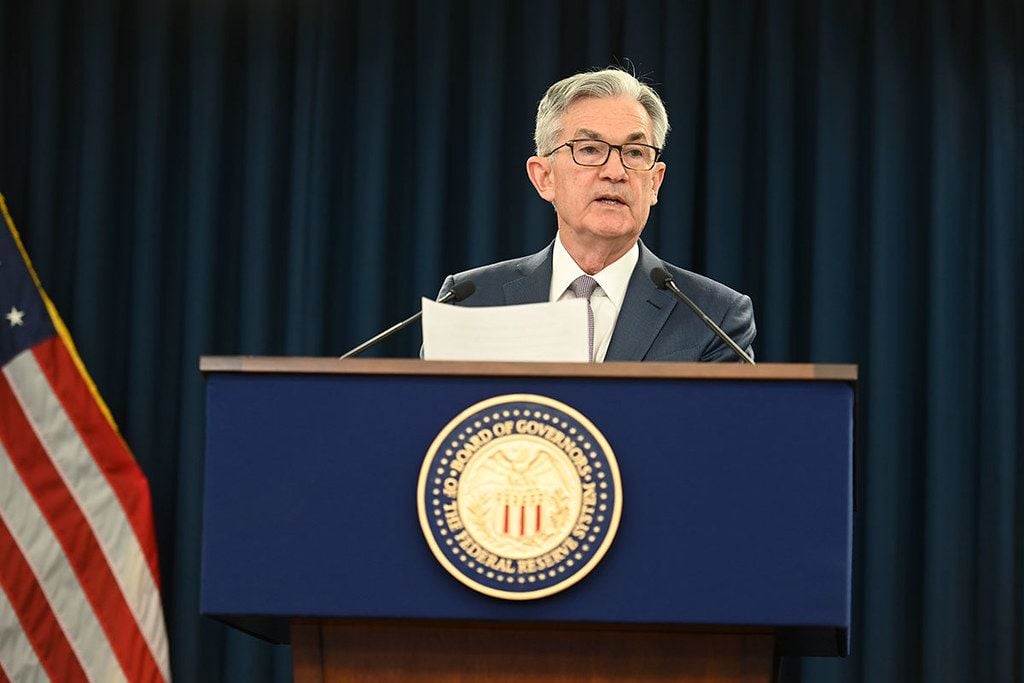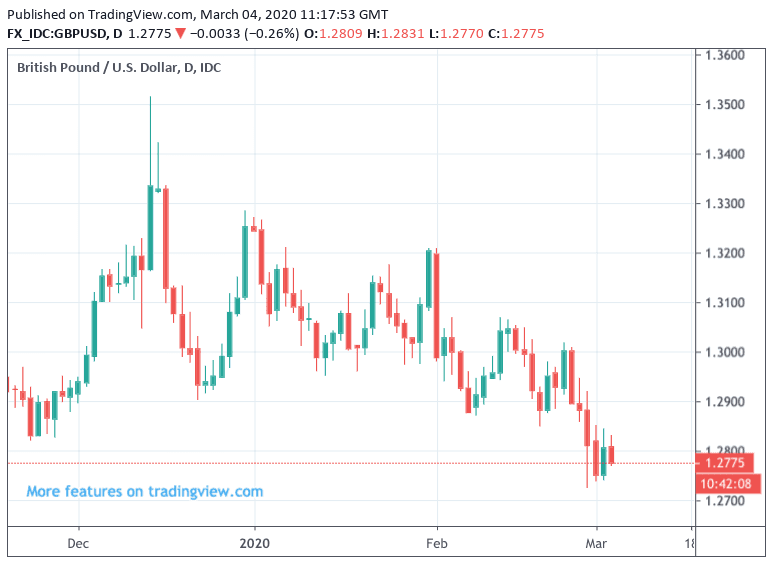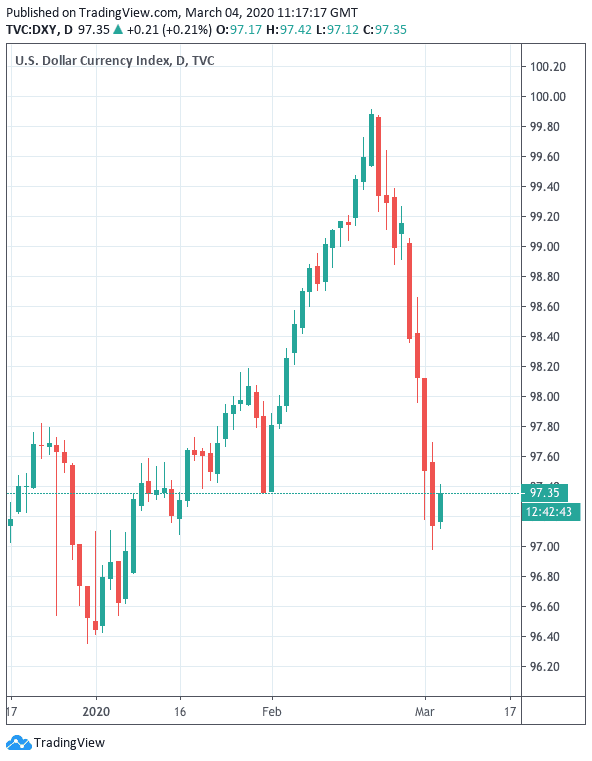Fed's 'Damp Squib': Dollar Rallies against Pound as Markets Unconvinced by Powell's Bazooka
- Fed rate cut underwhelms
- Effectiveness of Fed decision questioned
- USD higher on Wednesday
- But short-term trend appears to be lower

Above: FOMC Chair Powell answers a reporter's question at the March 3, 2020 press conference. Source: Federal Reserve.
- GBP/USD spot: 1.2776, -0.34%
- Bank transfer rates (indicative): 1.2429-1.2518
- FX specialist transfer rates (indicative): 1.2600-1.2660
The Dollar is trading higher against the majority of the world's major currencies, just hours after the U.S. Federal Reserve announced an emergency 50 basis point cut to their target interest rate level.
The move was a preemptive move against the expected negative economic impact of the coronavirus outbreak, but the overwhelming sense from the market's subsequent reaction is that the extraordinary move is something of a damp squib.
While global stock markets are in recovery mode in the mid-week session, the initial reaction by investors was to sell stocks and there is some way yet before markets convince they are in the process of recovering late February's declines. The yield on 10-year U.S. government bonds meanwhile slipped below 1.0%.
"The sheer magnitude of drop in UST yields (16-20bps), unmatched anywhere else in the G7 (a parallel to rate cut scope) undercut the USD," says a note from Mizuho Bank's dealing desk in Singapore.
The Dollar - which would typically be expected to fall in the face of such 'shock and awe' tactics - is meanwhile back in appreciation mode at the time of writing. The Pound-to-Dollar exchange rate is down 0.3% at 1.2784 while the Euro-to-Dollar exchange rate is at 1.1152, down 0.21%.
Above: The Dollar is currently engaged in a trend of appreciation against the Pound.
If they impact of the rate cut had delivered the market response intended, we would expect the Dollar to be trading a great deal lower.
"Markets were underwhelmed, if not outright distressed; with U.S. equities falling ~3% (from earlier gains), 10Y UST yields tumbling below 1% and commodities knocked back," says Mizuho. "So why the despondency? Well, for a start the build-up to coordinated stimulus hopes from the G7 (telephone) convention proved to be a damp squib."
A meeting of G7 finance ministers and major central bank governors on Tuesday pledged to "use all appropriate policy tools to ...safeguard against downside risks ... posed by COVID-19 ... stand ready to cooperate further on timely and effective measures".
According to Mizuho, this was "lamentably devoid of details and imminent coordinated action."
Indeed, it appears that only the Federal Reserve were willing to act on the commitment made in the G7 meeting, with what was billed as an emergency interest rate cut.
The problem for the Fed is "emergency" is unlikely to translate into a positive headline for the average American consumer, who would surely feel the coronavirus outbreak poses a material threat to their way of life. It could be argued the Fed's decision could knock confidence, as opposed to lift it.
"The Fed's "big bazooka surprise" of a 50bp cut was upended by; i) worries about the depth and duration of negative economic ripples from COVID-19 impact; ii) doubts about efficacy of rate cuts, and ; iii) lack of details on 'transmission'/credit relief measures," says Mizuho. "In other words, the Fed's 50bp rate cut, which was intended as decisive (and pre-emptive) action was construed as a response to in-coming economic distress... instead of celebrating a large rate cut (and consequent liquidity boost to markets), equity markets started fretting about looming clouds of recession."
Above: The Dollar index is up a day after the Fed cut. Overall however the Dollar has been declining. Worth noting the Dollar index is heavily influenced by EUR/USD.
Mizuho reflect on the fact that the last time the Fed deemed fit an inter-meeting upsized cut was during the Great Financial Crisis of 2008.
For markets there must be a dawning realisation that the negative economic consequences of the coronavirus outbreak is not necessarily a structural problem with the financial system, rather it is a disease.
And only the medical profession will be able to effectively remedy this problem.
"While the US equity market initially welcomed the aggressive policy action as it provided some reassurance to investors that the Fed 'put' remains alive and well, the temporary relief did not last long as the major US equity indices closed lower on the day by around 3%. It highlights that the Fed’s policy action may have backfired by heightening fears over the potential disruption ahead from the coronavirus while investors remain sceptical over the effectiveness of monetary easing to address economic disruption from the coronavirus," says Lee Hardman, Currency Analyst at MUFG.
The Dollar index - a broad measure of overall Dollar performance against a basket of currencies - has risen 0.26% since last night's close, but Hardman says the currency should ultimately remain under pressure.
The Dollar has nevertheless been in decline since late February and while it might be up at present, the short-term trend does appear to be lower.
"The sharp narrowing of the U.S. Dollar’s yield advantage is making it harder to justify it remaining at such overvalued levels," says Hardman.






